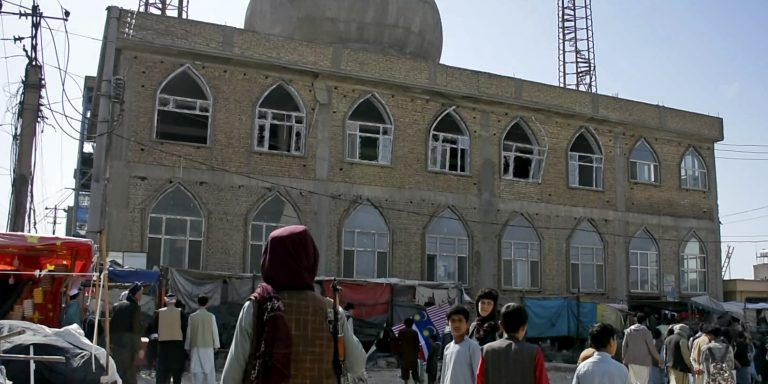
General Michael Kurilla, head of United States Central Command (CENTCOM), has suggested that at its current trajectory, Islamic State Khorasan (ISK) would be able to conduct external operations within approximately six months.
Since the Taliban takeover of Afghanistan in August 2021, counterterrorism analysts have warned about the growing threat of ISK, especially in light of the U.S. troop withdrawal and limited human intelligence assets in areas where ISK and other terrorist groups operate.
ISK has been diversifying its target set in Afghanistan over the past year, attacking Pakistani, Chinese, and Russian targets inside the country.
Globally, Islamic State is dedicating more resources to its affiliates in Afghanistan and Africa, especially as its core group comes under intense assault in Syria, while some franchises that were formerly prominent continue to ebb, such as those in Southeast Asia, Libya, and Egypt.
At its current trajectory, Islamic State Khorasan (ISK) will be able to conduct external operations “with little to no warning” in less than six months, the head of United States Central Command (CENTCOM), Army Gen. Michael Kurilla told the U.S. Senate earlier this month. Speaking specifically about ISK’s ability to attack Europe or Asia, Gen. Kurilla clarified that the group would have a harder time conducting an attack against the U.S. homeland. Still, based on recent ISK propaganda, the U.S. remains in the crosshairs of the jihadist group, which recently threatened to conduct a 9/11-style attack in the United States.
Since the Taliban takeover of Afghanistan in August 2021, counterterrorism analysts have warned about the growing capabilities of ISK, especially in light of the U.S. troop withdrawal and limited human intelligence assets in areas where ISK and other terrorist groups operate. While U.S. President Joe Biden has sought to reassure the American public by highlighting the U.S. military’s ability to carry out ‘over-the-horizon’ counterterrorism strikes, there are still concerns that without a U.S. troop presence in Afghanistan, there are likely to be sizeable intelligence gaps, particularly in a rapidly evolving threat landscape with multiple states and interests at play. A U.S. drone strike successfully eliminated al-Qaeda’s longtime leader Ayman al-Zawahiri in July 2022, an operation touted by the Biden administration as proof of the efficacy of an ‘over-the-horizon’ approach. However, that strike remains the only confirmed kinetic U.S. operation carried out since the withdrawal, and it remains to be seen if the United States can contain the growing jihadist threat in Afghanistan from a distance.
ISK has been diversifying its target set in Afghanistan over the past year, attacking Pakistani, Chinese, and Russian targets inside the country. After COVID-19 “artificially suppressed” terrorist activity through the first half of 2021, the end of that year saw a major uptick in ISK attacks, according to a report by the UN 1267 ISIL and Al-Qaida Sanctions Monitoring Team, responsible for reporting on Islamic State activity. Between August and December of 2021, ISK conducted 152 attacks in 16 provinces, compared with 20 attacks in five provinces during the same period in 2020. While Afghanistan experienced a 10 percent increase in “conflict-related security incidents and civilian casualties” during the final months of 2022 compared to the same period during the prior year, it also saw a decline in ISK attacks. According to a February report by the UN Secretary-General on Afghanistan, the number of ISK attacks in the country fell from 53 in seven provinces to 16 in four provinces. Yet ISK remains an extremely potent threat and one which is currently being underestimated. ISK’s targeting of the country’s religious minority Shiite Hazara community was called a crime against humanity by Human Rights Watch in late 2021.
The group’s attacks in Afghanistan serve both as important fodder for ISK propaganda and as a means of embarrassing the Taliban, demonstrating the de-facto ruling group’s inability to stabilize Afghanistan and protect both domestic and foreign interests. Just this week, ISK claimed a suicide attack that targeted Taliban members of the Ministry of Foreign Affairs, the second ISK attack against that target since January. With the United States focused on great power competition and bolstering Ukraine’s war efforts against Moscow, there is a serious risk of Washington deemphasizing global counterterrorism operations, allowing blind spots to emerge in parts of South Asia and sub-Saharan Africa, and treating the two objectives as mutually exclusive. Afghanistan’s neighbors in the region — including Iran and Pakistan — are steadily attempting to increase their respective influence in Afghanistan, turning the country yet again into an arena for foreign meddling and external interference.
Globally, Islamic State is dedicating more resources to its affiliates in Afghanistan and parts of Africa, especially as its core group comes under intense assault in Syria, while some franchises that were formerly prominent continue to ebb, such as those in Southeast Asia, Libya, and Egypt. With several of its leaders killed in U.S. raids in 2022, ISIS “core” will be looking to ISK to help it generate momentum, recruit new members, and highlight perceived successes through increased propaganda. Successful recruitments within Afghanistan and across the region could bolster ISK’s manpower, creating more challenges for the Taliban, which has struggled to perform counterinsurgency operations throughout the country. Continued instability across the border in Pakistan, where the Tehrik-i-Taliban (TTP), or Pakistani Taliban, continues to wage an insurgency, will also negatively impact the security context in Afghanistan. Two decades after the U.S. invasion, the situation in Afghanistan seems to have come full circle, with the Taliban back in power, presiding over an increasingly fragile state plagued by terrorism and the self-serving interests of regional powers.
